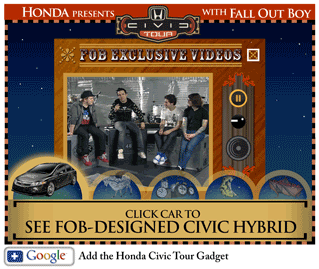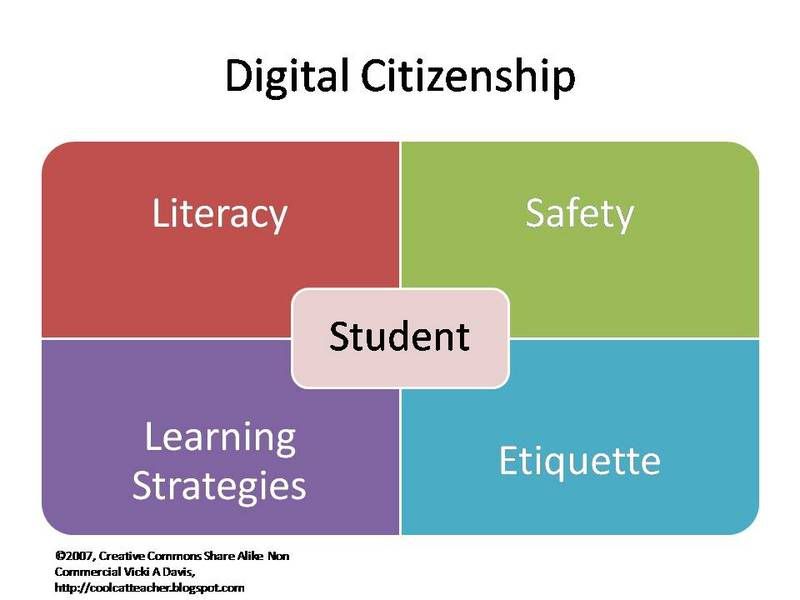My
post about the need for more literacy instruction has created a
virtual firestorm of response.
Why is digital citizenship an issue?A November 2006
Pew study found that:
Eighty seven per cent (87%) of online users have at one time used the internet to carry out research on a scientific topic or concept and 40 million adults use the internet as their primary source of news and information about science.
Not the library, but the
Internet.Let's look at our students. In the most recent PEW study available (August 2005), it was determined that:
"Eighty seven per cent (87%) of all youth between the ages of 12 and 17 use the internet. "
These numbers show us that the effective literacy skills but particularly digital literacy holds the very future of society in its grip. The ability to form one's opinion and validate sources is the key.
If students take the "first thing they come to" to determine their opinion, then we are sorely at the mercy of Google's algorithms and the determination of webmasters who desire to be heard. Understanding how to search, how to validate sources, and even how to use
deep web resources is an essential part of being literate.
So who decides what to do?In the Pew Research study,
"A Typology of Information and Communication Technology Users"-- you'll find that they found that about 31% of American Adults are
"Elite Tech Users."That is me.
If you're reading this post, it is probably you.
We are outnumbered.
We are not teaching "mini-me's," we are teaching students. I would approximate a consistent number with what Pew finds, that at least a full 2/3rds come to me sorely lacking in these abilities.
Although my goal is to teach students processes and frameworks that will turn them into what I call "intuitive learners," most are not there when they come to me.
Our kids need to understand these things!
Many
agree that literacy is important.
(These are, except where noted, taken from the comments from my post: Digital Literacy Comes Home.)
Stephen Downes says, "Indeed, a person who reads a website and concludes that it's true, no matter what it says, is dangerously illiterate."
Tom Hoffman says, "Check the source's references. Confirm information by looking at multiple sources. Read carefully."
David Warlick says, "Instead of starting with a web page, displayed on the whiteboard, they [teachers] should start with Google, demonstrate how they found the page, the considerations and decisions they applied to select that page, and include in the presentation, the evidence that what's being presented is valuable...When we model authority, we shouldn't be surprised when students look for authority in every piece of information."
Kristin Hokanson says, "At the upper level, kids need to be taught HOW to access credible sources...via data bases, advanced google searches and other good search strategies. If we don't, they will continue to go to the first sources available. "
Gary Stager (from his comments over at David Warlick's blog) says, "I certainly feel like the majority of my students (4th through 12th grades) cannot find good information by searching Google. That's why I'm changing the way I teach "web research"."
NJTech Teacher, says "It is VERY hard to teach children these skills. ..In my opinion, the kids get an assignment like this and they just want the assignment over! So, they grab what comes up first and run with it, no analysis involved (my son included)."
Anonymous says, "This one of those things that I was shocked to see but after processing it I realized how true and common it is. ..I think we do a good job of stressing accurate sources when it comes to books, but it is different online, which is where most of the research our students are doing comes from. We need to make sure as educators we are holding our students and ourselves more accountable. "
Sharon says: "I have been asking students to evaluate the web sites they find for years, using a variety of evaluation instruments and criteria. They didn't and still don't like to do it!"
Profv says "First, many [students] have not developed the ability to "skim" for information... Secondly, students have trouble connecting information from multiple sources even up through high school."
Through the controversy over my post, I still see an overall consensus that these things are important.
I want to keep the focus on digital citizenship because that is why I wrote the post.Digital CitizenshipToo many teachers talk about how students are coming to them vastly uneducated about researching, validating sources, and using multiple sources of information.
Students are believing everything they read. Where is the skepticism? The investigation? The desire to double check things? It should be instilled as a part of what they learn, but specifically relating to Internet sources, thus the word digital.
Most students
think if it is the library that the librarian has thoroughly
sanitized everything in there. (Which too, as Tom Hoffman pointed out, is flawed thinking.)
When there is a gap in student knowledge what should happen?Here is my rough sketch of our process here at Westwood when we identify a knowledge gap.
(And if you're doing you're job, you'll always be finding these.)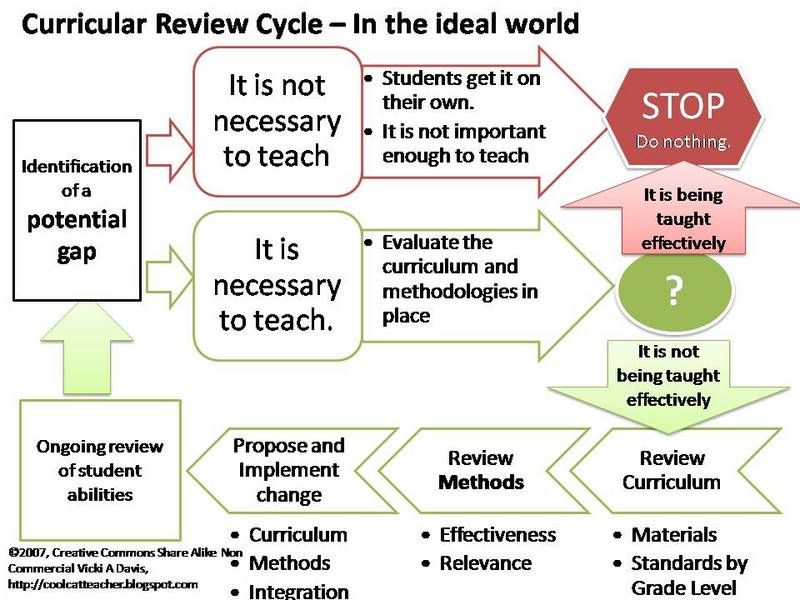
But no school is ideal! (Not even ours. ) After five years in the classroom and ten years working as a consultant and trainer for teachers, I would theorize that it most curricular review is more like the following:
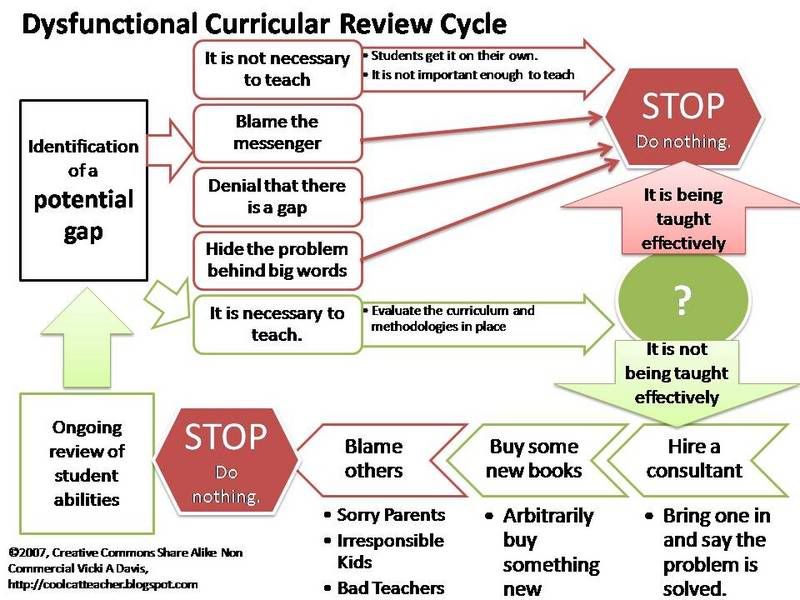
Let's look at a few of these, that I feel were exhibited by some of the comments on my last post -- I am
pulling from those comments.
It is not necessary to teachStephen Downes says:
"I don't think that anyone, anywhere, is writing about casting kids - or adults, for that matter - adrift in a sea of information with no anchor or support. A kid can be 'not taught' and yet still not be left to 'figure out' thinks on their own."
Yes, our ultimate aim is students who "don't need us" as Stephen says later in his post. However, as
Kristin Hokanson says in her blog,
"Stephen Downes comment that kids can be "'not taught' and yet still not be left to 'figure out' things on their own." and with this disagree. We spend a ton of time emphasizing "healthy schools"--monitoring snacks that are served in the cafeteria, encouraging parents to discuss healthy alternatives for birthday treats, creating opportunities for students to participate in active games during recess. It is important to model these healthy choices. I went on to express that I would NEVER leave my kids in a kitchen full of all the food they can eat, with a big screen tv, nintendo, and a shelf of books and expect them to figure out that they will feel best if they eat healthy and read books...my kids would never figure out on their own that chicken with broccoli and book reading is better for them than video games, the Disney Channel washed down with Cheetos and soda with out some modeling and instruction early on. Kids need to be taught, teachers need to model so that kids can apply those skills when relevant. It is true with literacy as well."
Teachers are part of the equation. But as most of us agree, it is no longer the model of the "sage on the stage" but rather the "guide on the side." The teacher is not the center, however, these skills must be intentionally covered and indeed modeled
by every teacher, as
David Warlick says:
"We have to practice what we preach, and we have to practice it out loud!
At the same time that we continue to use our textbooks (or what ever they evolve into), reference works, databases, and our own expertise, we should also bring in, at every opportunity, content and resources that we have found, evaluated, processed, and prepared for teaching and learning, and that we should include conversations about how we found it, evaluated, and processed it. If the are seeing us, every day, asking the questions that are core to being literate today, then perhaps they will not only develop the skills of critical evaluation, but also the habits."
Such things as verifying sources and basic literacy skills must intentionally be included in our curriculum at all levels. It should be modeled as part of what we teach as teachers and as parents. It should be encouraged in our social networks as it is in the
Youth Voices network and in the
sounding board that was part of the Horizon Project.
It must become enmeshed in every part of education.Denial that there is a gapTom Hoffman said in his comments:
"I don't see what makes this "digital literacy." Aside from a basic understanding of how to follow a hyperlink, the research skills I was taught 25 years are sufficient for assessing the quality of this source. Check the source's references. Confirm information by looking at multiple sources. Read carefully. What's the first thing my now retired mother covered in the first class she taught at Juniata Valley High School: evaluating sources."
Yes, it was taught 25 years a go. It is not taught now like it needs to be.
Tom programs, however, how many students still learn programming as they did 25 years a go -- that would be preposterous! And if you just use the literacy model from 25 years a go, you are again falling short! We must push ahead and improve.
The
Big 6 are great and some sort of excellent framework like this needs to be taught everywhere! I believe there is a difference between the methodologies employed in online verification and book verification.
(For example, I quite publicly learned in February what a parody site was a while back. I doubt you'd find a "parody" book in the library.)I agree with
David Warlick:
"This is a crucial problem for us in education, equipping our students with the skills to critically evaluate the information that they encounter. It is probably the most frequent complaint that I hear from educators about the Internet, as they try to teach that which their students must learn."
There are many of us teachers offering up our anecdotal evidence to say:
"Hey, we've got a problem here. Our digital literacy skills are sorely lacking EVERYWHERE. We've got to do a better job! All of us, me included!"
We need practical review of this problem.
I want to see researchers looking at what is being taught and see some trends in digital citizenship skills of students including the literacy component but also the others. Let's get to the facts.
The point here is digital literacy, not what happened on 9/11 ,but
verification of sources and making up one's own mind and having the process in place to do that. Not centering around what a teacher thinks, but rather a sound way to make decisions that is not flawed by accepting what one reads just because the website is pretty.
I believe that some read into my post that teachers should impose their viewpoint on their students. In fact, Gary Stager asks on David Warlicks post on this:
I think that CNN has veracity, I think that the first site he [my son] came to did not. We could probably debate my conclusions forever. Let’s keep the focus on digital literacy.
We all seem to agree that this is important. Insulting me in this case (or my son or his teacher) is really like a basketball player going after a commentator because the commentator is reporting disfavorably about what is happening on the court. I'm reporting things as I see them.
Let's get our head in the game and talk about making sure students are adequately literate (and good digital citizens.)
tag: Stephen Downes, David Warlick, Gary Stager, digital literacy, Kristin Hokanson, Megan Golding, learning, education, teaching, literacy, learning, debate

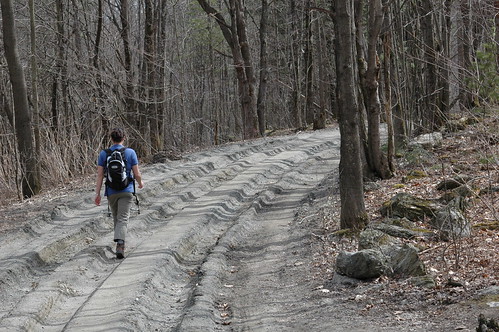
 Creative commons will be put to test as will our interconnected world.
Creative commons will be put to test as will our interconnected world.